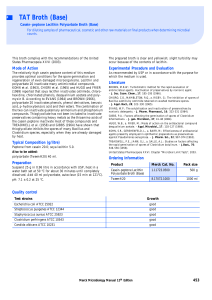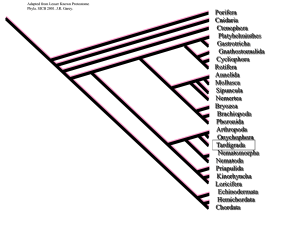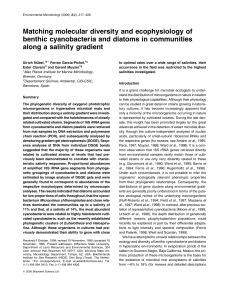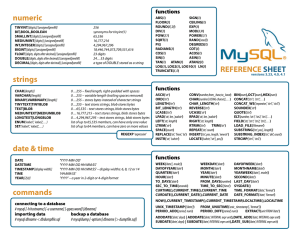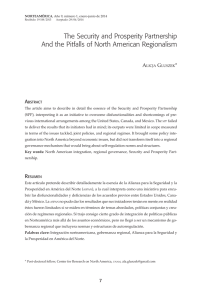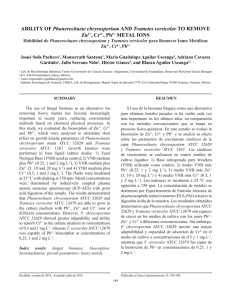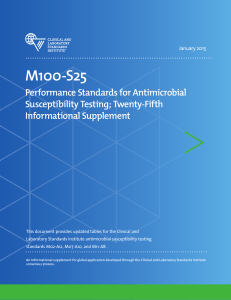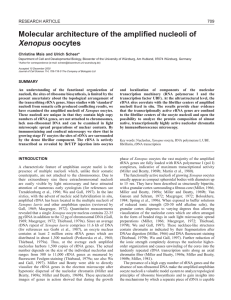Detection of Ureaplasma spp. in pig lungs with lesions consistent
Anuncio
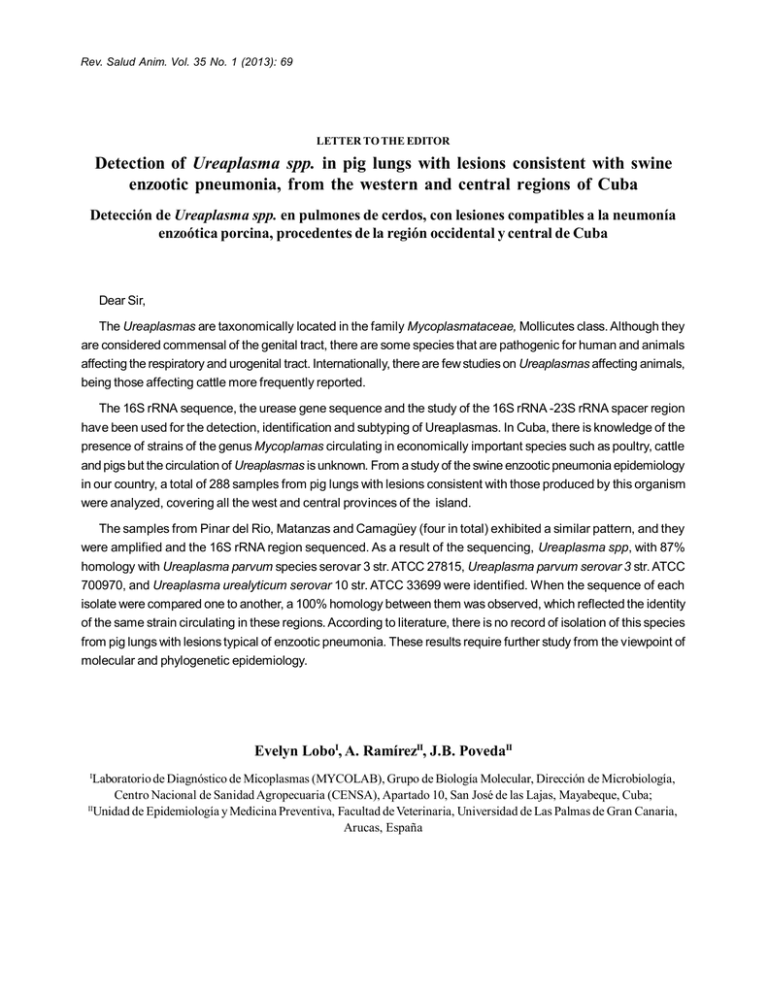
Rev. Salud Anim. Vol. 35 No. 1 (2013): 69 LETTER TO THE EDITOR Detection of Ureaplasma spp. in pig lungs with lesions consistent with swine enzootic pneumonia, from the western and central regions of Cuba Detección de Ureaplasma spp. en pulmones de cerdos, con lesiones compatibles a la neumonía enzoótica porcina, procedentes de la región occidental y central de Cuba Dear Sir, The Ureaplasmas are taxonomically located in the family Mycoplasmataceae, Mollicutes class. Although they are considered commensal of the genital tract, there are some species that are pathogenic for human and animals affecting the respiratory and urogenital tract. Internationally, there are few studies on Ureaplasmas affecting animals, being those affecting cattle more frequently reported. The 16S rRNA sequence, the urease gene sequence and the study of the 16S rRNA -23S rRNA spacer region have been used for the detection, identification and subtyping of Ureaplasmas. In Cuba, there is knowledge of the presence of strains of the genus Mycoplamas circulating in economically important species such as poultry, cattle and pigs but the circulation of Ureaplasmas is unknown. From a study of the swine enzootic pneumonia epidemiology in our country, a total of 288 samples from pig lungs with lesions consistent with those produced by this organism were analyzed, covering all the west and central provinces of the island. The samples from Pinar del Rio, Matanzas and Camagüey (four in total) exhibited a similar pattern, and they were amplified and the 16S rRNA region sequenced. As a result of the sequencing, Ureaplasma spp, with 87% homology with Ureaplasma parvum species serovar 3 str. ATCC 27815, Ureaplasma parvum serovar 3 str. ATCC 700970, and Ureaplasma urealyticum serovar 10 str. ATCC 33699 were identified. When the sequence of each isolate were compared one to another, a 100% homology between them was observed, which reflected the identity of the same strain circulating in these regions. According to literature, there is no record of isolation of this species from pig lungs with lesions typical of enzootic pneumonia. These results require further study from the viewpoint of molecular and phylogenetic epidemiology. Evelyn LoboI, A. RamírezII, J.B. PovedaII I Laboratorio de Diagnóstico de Micoplasmas (MYCOLAB), Grupo de Biología Molecular, Dirección de Microbiología, Centro Nacional de Sanidad Agropecuaria (CENSA), Apartado 10, San José de las Lajas, Mayabeque, Cuba; II Unidad de Epidemiología y Medicina Preventiva, Facultad de Veterinaria, Universidad de Las Palmas de Gran Canaria, Arucas, España


